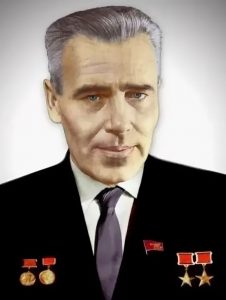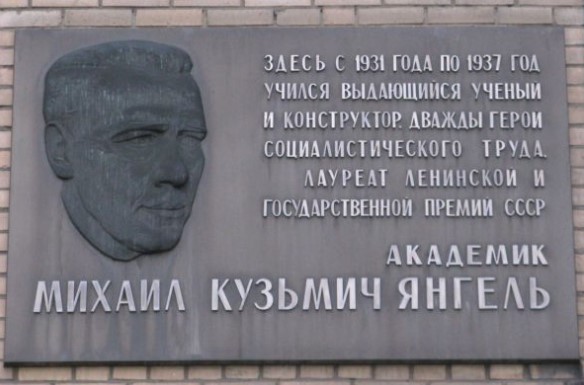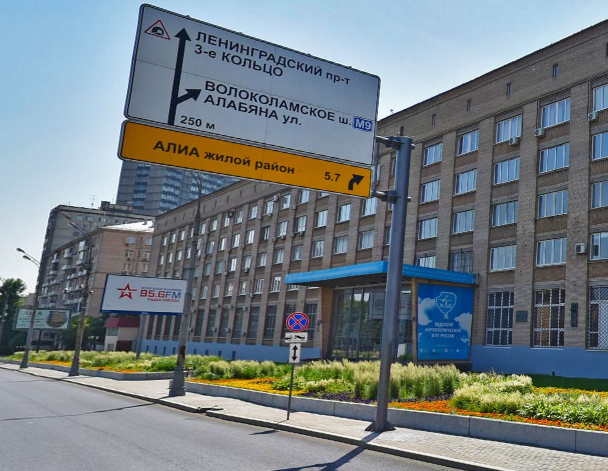Mikhail Kuzmich
Yangel
1911-1971

Mikhail Kuzmich Yangel was an outstanding Soviet scientist and designer in the field of rocket and space technology, a founder of a new direction in the field of strategic missile weapons, a direction related to the creation of rockets on stable high–boiling fuel components that became the basis of strategic missile forces, the chief designer of OKB-586 of the State Committee of the Council of Ministers of the USSR on Defence Technology. He was born in the village of Zyryanova of the Nizhneilimsky district of the Irkutsk region (now it is flooded by the waters of the Ust-Ilimsky reservoir) in a large poor peasant family. In 1926, after finishing the 6th grade, he moved to Moscow to live with his brother. While studying in the 7th grade, he worked part-time in glass printing, carried stacks of printed materials around the city. After graduating from the School of Factory Apprenticeship, he worked as an assistant of the master of the textile factory named after the Red Army and Navy in the city of Krasnoarmeysk, the Moscow region (1929-1931). At the same time, he studied at the rabfak. In 1931 he entered Moscow Aviation Institute (MAI), from which he graduated with honors in the specialty “Aircraft Engineering” in 1937. As a student of MAI, he joined the Design Bureau (KB) of N.I. Polikarpov and worked there as a designer, lead engineer, assistant chief designer, deputy director at the Menzhinsky Aviation Plant in the N.N. Polikarpov Design Bureau (1935-1944). In the autumn of 1941, together with aircraft factory No. 51, M.K. Yangel was evacuated to the city of Novosibirsk. Then he worked as the Deputy Chief Engineer of the Design Bureau A.I. Mikoyan (1944) and lead engineer in the Design Bureau V.M. Myasishchev (1945). He participated in the development of the I-153, TIS aircraft, the work of the Amtorg Joint stock company in the USA. He organized the fine-tuning of the I-180, I-185 fighters, and the modification of the Po-2 aircraft. He worked in the office of the Ministry of Aviation Industry of the USSR (1946-1948). In 1948-1950 he studied at the Academy of Aviation Industry of the USSR (graduated with honors). From 1950 to 1954, he climbed the career ladder, reaching the position of the chief engineer of OKB-1 Research Institute-88 in Kaliningrad (now it is Korolev), the Moscow region. During this period of time, rocket technology worked up by OKB-1 NII-88 was rapidly developing. Work on a new long-range ballistic missile (BR) R-2 was being completed, a strategic missile R-5 of a non-stabilized scheme with carrier tanks with a flight range of 1200 km was being created, serious design studies were being carried out on complex topics H-1, H-2 and H-3, which were devoted to solve problems of the development of not stabilized BRDD and the study of the possibility of creating and prospects for the development of such missiles on high-boiling fuel components. In 1954 the Government, at the request of the Ministry of Defence, commissioned OKB-586 to develop a strategic BR based on stable P-12 fuel components with a flight range of 2000 km. M.K. Yangel was appointed as the chief designer of the specified rocket in OKB-586, as a supporter of a new direction in the development of ballistic missiles – the use of nitric acid with nitrogen oxides or nitrogen tetroxide as an oxidizer. In 1958 OKB-586 under the leadership of M.K. Yangel completed the test of a single-stage ballistic missile R-12 weighing 42 tons with a range of 2000 km. In 1959, this missile was put into service. Flight testing of a more advanced BR with a flight range of 4,500 km ended in 1961 with its acceptance into service. By the decree of the Presidium of the Supreme Soviet of the USSR (marked “top secret”) dated June 26, 1959, Mikhail Kuzmich Yangel was awarded the title of the Hero of Socialist Labor with the award of the Order of Lenin and the Hammer and Sickle gold medal for his services in creating special equipment. In 1958 M.K. Yangel began the development of a two-stage transversely divided intercontinental missile R-16 with a monoblock warhead weighing 140 tons. This BR met all the modern requirements of combat effectiveness at that time and surpassed in its basic parameters the American intercontinental missiles of the Atlas and Minuteman-1 types. Despite the disaster that occurred during the launch of the first R-16 rocket at the end of 1960, its flight design tests were completed in 1961, and in the same year a regiment of such missile systems was put on combat duty. In 1960 he was awarded the degree of the Doctor of Technical Sciences without defending a dissertation. In 1961 he was elected a full member (Academician) of the Academy of Sciences of the Ukrainian SSR, and in 1966 – Academician of the USSR Academy of Sciences. By the decree of the Presidium of the Supreme Soviet of the USSR (marked “top secret”) dated June 17, 1961, Mikhail Kuzmich Yangel was awarded the second Hammer and Sickle Gold Medal (No. 90/II) for special merits in the development of rocket technology, in the creation and successful launch of the world’s first Vostok spacecraft with a man on board.
Address: Moscow, Volokolamsk highway, 4, bldg. 7

